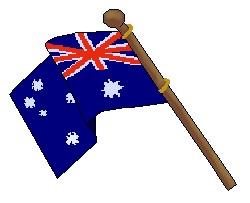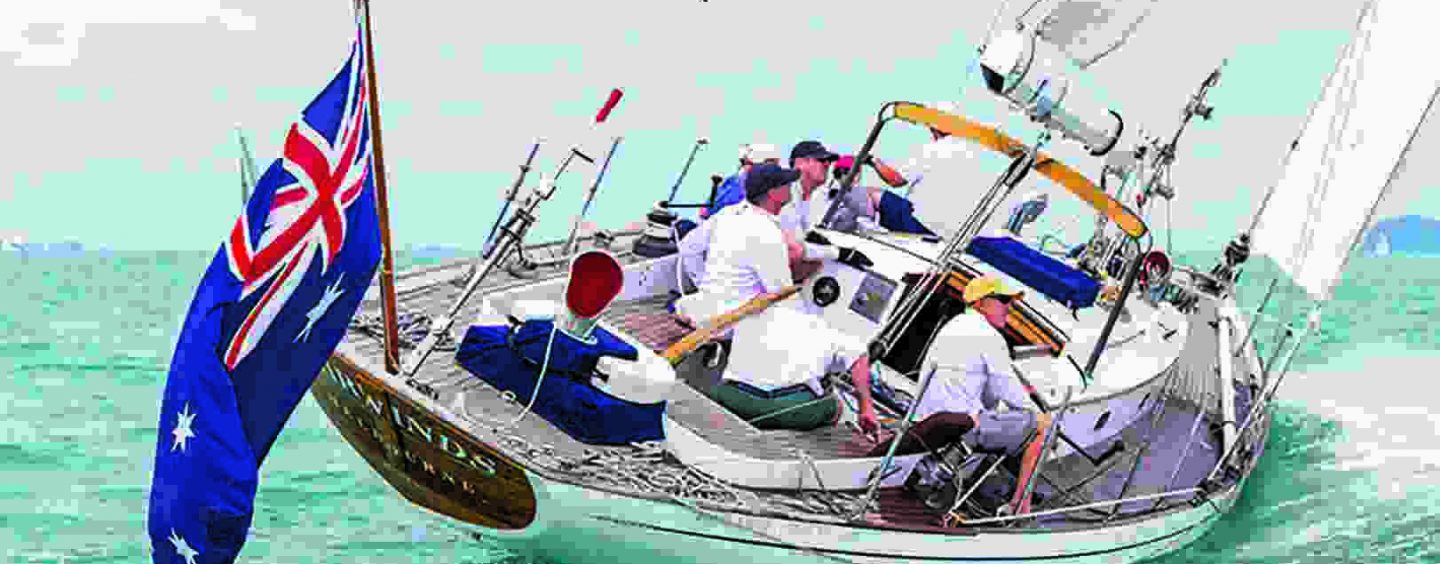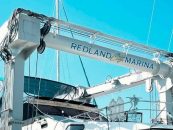ENSIGN
 When a yacht is in foreign waters, or when entering and leaving a harbour, it should fly an ensign, or a national flag. In the remotest of cases, you might be signaled by a warship to raise your ensign. This flag should be flown from the stern of the yacht. A ship’s captain will also fly the signals that show his affiliations or loyalties. These flags are flown on pig sticks which are connected to a halyard so that when raised to the top of the mast, they extend above the mast, allowing the flags to be seen flying above the boat’s sails or they can be flown on the port spreader on the mast.
When a yacht is in foreign waters, or when entering and leaving a harbour, it should fly an ensign, or a national flag. In the remotest of cases, you might be signaled by a warship to raise your ensign. This flag should be flown from the stern of the yacht. A ship’s captain will also fly the signals that show his affiliations or loyalties. These flags are flown on pig sticks which are connected to a halyard so that when raised to the top of the mast, they extend above the mast, allowing the flags to be seen flying above the boat’s sails or they can be flown on the port spreader on the mast.
There is no clear rule of size for custom-made flags, though generally it is recommended that the Australian ensign red or blue should have a flag size of one-inch per foot of boat. So if the boat is around 54ft, you can use a 1.5yd (138cm) flag.
BURGEE
 The flags on recreational boats are a centuries-old tradition that, to this day, indicate where you are from and to which club or organisation you belong. The club flag, regardless of shape, is referred to as a burgee, which is a distinguishing flag of a recreational boating organisation. They are usually in the shape of a pennant, while other variations have angular indentation forming two tails.
The flags on recreational boats are a centuries-old tradition that, to this day, indicate where you are from and to which club or organisation you belong. The club flag, regardless of shape, is referred to as a burgee, which is a distinguishing flag of a recreational boating organisation. They are usually in the shape of a pennant, while other variations have angular indentation forming two tails.
Members of a yacht club may fly their club burgee when underway or while at anchor. They are usually flown from the top of the foremost sailing mast or from the lowest starboard spreader on that mast. The most common position to attach a burgee on a power boat is on a short staff at the bow.
The rules on when to use your burgees, as commonly agreed, are as follow: At the home waters of your yacht club, you should fly your club’s burgee. If you are in neutral waters, you can fly the burgees of any clubs to which you belong. However, if you are on a cruise that is organised by a particular club, you should fly that club’s burgee.
If you belong to several clubs, it is commonly accepted that your main burgee will be the club in which your yacht is kept or the club where you are most involved. If you are in the vicinity of another club or participating in an event organised by another club of which you are a member, you should fly the burgee of that club near your location or the club organising your event. When you are racing, you do not fly a burgee.
Within a club’s hierarchy, unique burgees may be granted to members of rank such as commodores, vice- and rear- commodores; even a past commodore can be given an exclusive shaped flag. These traditions vary from club to club, so ask your commodore for an explanation.
The etiquette surrounding the centuries-old traditions of burgees is becoming distorted as the evolution of yachts and boat designs play a factor on the old rules. On modern vessels, the mast is equipped with an array of electronic instruments, spinning and moving power-generating equipment and antennae. Modern-day flag practices must be well thought out, while keeping yachting traditions in mind.
The Gold Coast is fortunate to have a dedicated flag shop that stocks a range of ensigns and maritime signal and code flags. Palmer Flags also custom-make burgees and can organise quantity printing of club burgees.
Published in print October-December 2021



























